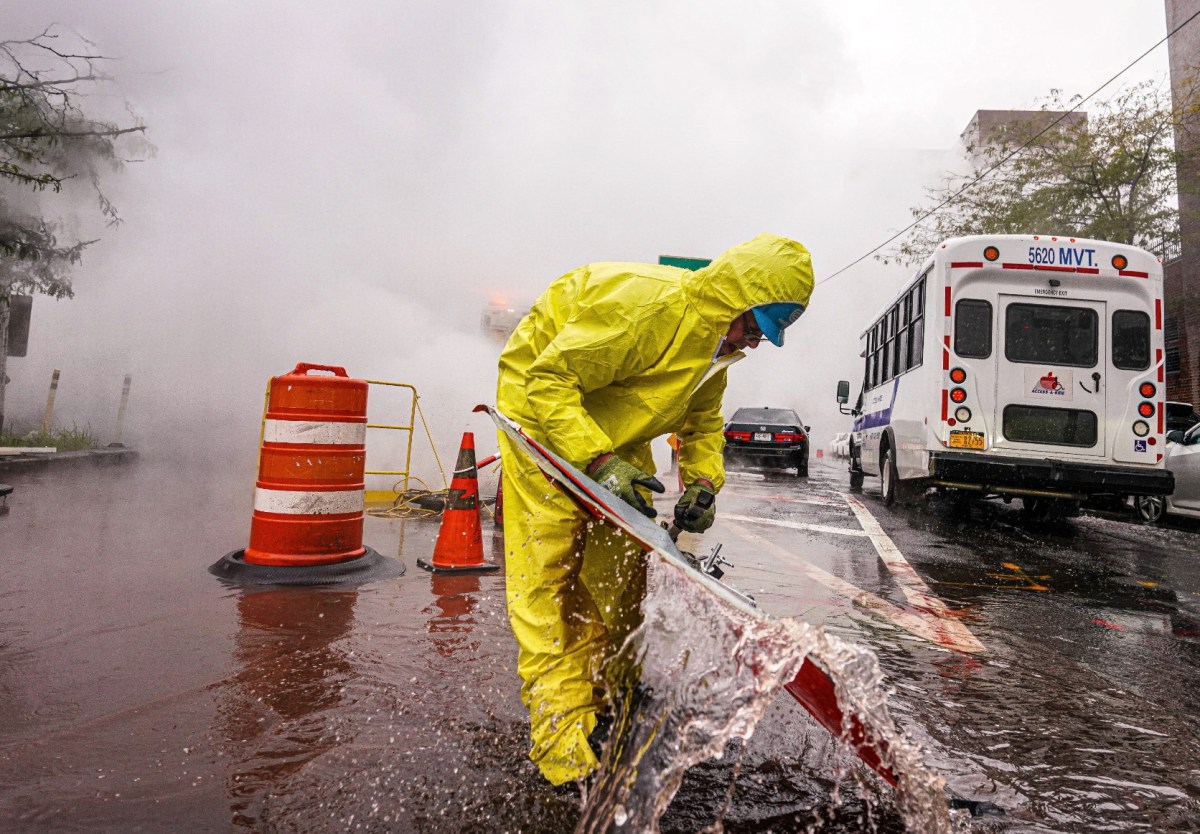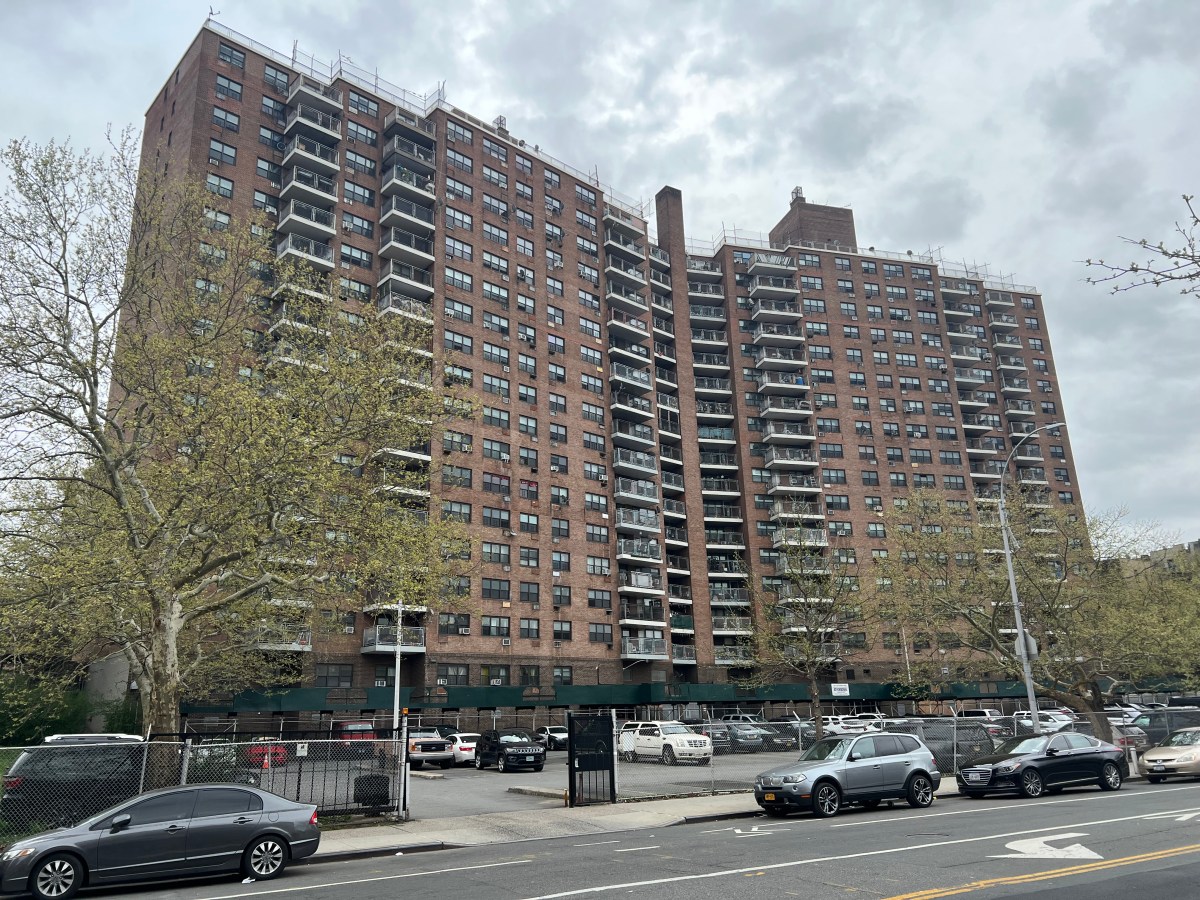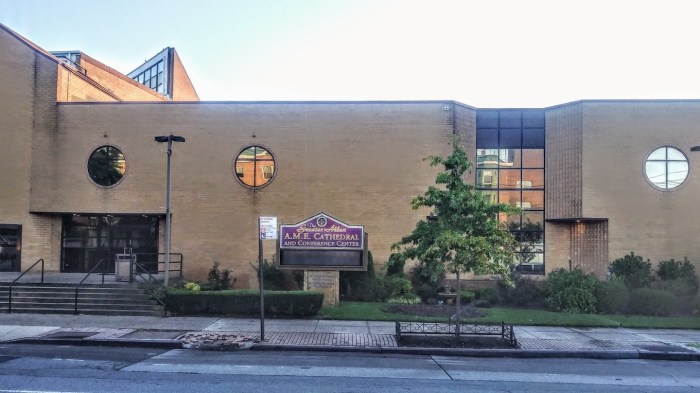As if a 4.8 magnitude earthquake was not enough to shake things up in NYC, a new climate assessment released Monday says that NYC will be warmer and wetter, with plenty of rainy and hot days ahead — much of which can lead to intense flooding throughout the city.
The New York City Panel on Climate Change (NPCC) announced its fourth full climate assessment report, dubbed NPCC4, confirming the city will be warmer with more extreme heat events. The report also indicates there will be growing risks from intense rainfall and inland flooding.
Flooding
Extreme rainfall events — also known as “cloudbursts,” when a large amount of rain falls in a short time — will increase in number and severity in the future, the report indicates. By the end of the century, the city is reportedly projected to experience as much as 30% more annual rainfall than today.
As New Yorkers are all too familiar with, flooding becomes a big issue with increased rainfall. Southeast and Central Queens, Southeast Bronx and Staten Island’s North Shore are areas most prone to extreme rainfall, the report says, due to factors including topography, historic stormwater flow paths and land use.
Last year, parts of New York City were hit with a record rainfall from the remnants of a tropical storm. Some areas saw more than 8 inches of rain.
Extreme heat
According to the report, the number of hot days and the frequency and duration of heat waves are expected to increase as sea levels are also projected to rise.
Dramatic changes in climate can come with adverse effects for health and equity. Changes such as these can lead to health risks that become threats to all New Yorkers, especially those most vulnerable because of age, poor health, racial and social inequities and social isolation, the report says.
Additionally, heat waves are, on average, the deadliest type of extreme weather in NYC, according to the report.

How will the city respond?
The NPCC, an advisory board appointed by the mayor, makes climate projections to help inform the city on climate changes and preparedness efforts needed for changes in weather. Scientists including professors of geology, ocean engineering and environmental justice are part of the panel.
“As New York City responds to the impacts of climate change, we must be guided by the latest data, and the NPCC findings will be used by city agencies to inform our policy and programs,” New York City Chief Climate Officer and Department of Environmental Protection Commissioner Rohit T. Aggarwala said. “The panel’s variety of expertise, including in architecture, design, and demography, has been essential to creating this important work, and we look forward to many more years of collaboration.”
Flooding, one of the key areas of research within the report, can limit how people navigate the city. It can lead to closed roads, limited commutes and transit disruptions. (Check out NYC’s stormwater flood map.)
With flooding becoming an increasingly important issue for NYC, the NPCC’s report says that “more grey and green infrastructure and natural and nature-based solutions are needed.” Grey and green infrastructure refers to a combination of natural landscapes as well as man-made approaches to combat flooding, including pipes and sea walls.
Elijah Hutchinson, executive director of the Mayor’s Office of Climate and Environmental Justice, said the report will “serve as a foundation” for city construction projects when it comes to infrastructure.
“The best available science on climate helps advance our goals to further environmental justice and improve health for all New Yorkers,” Hutchinson said. “This data will also serve as a foundation for city construction projects as we work to make our infrastructure more resilient.”
Since the high burdens of climate adaptation, including higher energy costs, insurance premiums and relocation, can affect people differently, the report also suggests a “a climate displacement and social vulnerability score to better measure the risks of climate displacement.”
“Excessive heat, rain, tides, and pollution threaten the foundational strength of New York City, a foundation critically necessary for strong housing, strong schools and a strong economy,” Deputy Mayor for Operations Meera Joshi said. “We must rise to the occasion as a city making sure every dollar spent towards infrastructure goes further, and every foot of grass, every tree, every brick, does double duty to account for rain and heat. Through daily discipline we will meet our climate goals and ensure the bright NYC future that our children and grandchildren deserve.”
Read more: Score Big with Fanatics Sportsbook Promo!




































